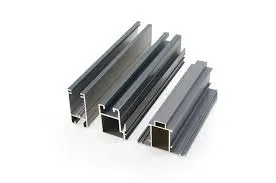Understanding the Causes and Effects of Wrought Iron Rusting in Various Environments
Understanding Wrought Iron Rust Causes, Effects, and Prevention
Wrought iron, with its unique composition and characteristics, has long been appreciated for its strength, malleability, and aesthetic appeal. However, despite its durability, wrought iron is not immune to corrosion. One of the most common forms of corrosion that affects wrought iron is rust. Understanding wrought iron rust—its causes, effects, and prevention methods—can help extend the life of wrought iron products in a variety of applications.
What is Wrought Iron?
Wrought iron is an iron alloy that has a very low carbon content, typically less than 0.08%. This composition gives wrought iron its unique properties, making it suitable for various uses, from decorative elements like gates and railings to structural applications such as beams and brackets. The material is known for its ability to be forged and shaped, allowing for ornamental designs that enhance aesthetic appeal.
Causes of Rust Formation
Rust is formed through a chemical process known as oxidation, which occurs when iron comes into contact with moisture and oxygen. In the case of wrought iron, even small amounts of water or high humidity levels can lead to rust formation. The primary causes of rust in wrought iron include
1. Moisture Exposure Rainwater, humidity, and even condensation can initiate the rusting process. When water accumulates on wrought iron surfaces, particularly in crevices or scratches, it creates a perfect environment for rust development.
2. Electrolytic Reactions Wrought iron can be susceptible to galvanic corrosion when it comes into contact with dissimilar metals. This phenomenon occurs when two different metals are in electrical contact in the presence of an electrolyte, leading to accelerated corrosion of the less noble metal.
3. Environmental Factors Industrial pollution, saltwater coasts, and acidic conditions can all contribute to faster rusting. For instance, coastal areas with high saline content in the air can significantly increase the rate of oxidation.
Effects of Rust on Wrought Iron
wrought iron rust

The presence of rust on wrought iron can lead to several detrimental effects. Firstly, rust not only affects the appearance of the material, leading to unsightly discoloration and surface degradation, but it can also weaken the structural integrity of the iron. As rust develops, it forms iron oxide which expands and can cause cracks or flaking, ultimately compromising the strength of the wrought iron.
Moreover, unless properly addressed, rust can lead to significant financial implications due to repair or replacement costs. In architectural applications, the visual impact of rust can detract from the overall design, making regular maintenance essential to preserve the functionality and aesthetic quality of wrought iron features.
Prevention of Rust
To combat rust, various preventive measures can be employed
1. Protective Coatings One of the most effective ways to prevent rust is through the application of protective coatings. Paints, primers, and galvanization can provide a barrier that insulates the iron from moisture and oxygen. Regularly maintaining these coatings is vital for long-lasting protection.
2. Proper Drainage Ensuring that water cannot accumulate on wrought iron structures can help minimize exposure to moisture. Adequate drainage systems and designing features to shed water are essential in preventing rust.
3. Regular Maintenance Routine inspection and maintenance of wrought iron products are critical. Cleaning the metal surfaces to remove dirt, grime, and existing rust, followed by the application of rust inhibitors, can significantly prolong the life of wrought iron.
4. Controlled Environment In some cases, controlling the environment where the wrought iron is located can help reduce the risk of rust. For instance, utilizing dehumidifiers and ensuring ventilation in enclosed spaces can greatly minimize humidity levels.
Conclusion
Wrought iron, while beloved for its strength and beauty, is not immune to rust. Understanding the causes and effects of rust can empower owners and caretakers to take the necessary preventive measures. By employing protective coatings, ensuring proper drainage, conducting regular maintenance, and controlling environmental factors, the longevity of wrought iron can be preserved, maintaining its functionality and aesthetic appeal for years to come.
-
Wrought Iron Components: Timeless Elegance and Structural StrengthNewsJul.28,2025
-
Window Hardware Essentials: Rollers, Handles, and Locking SolutionsNewsJul.28,2025
-
Small Agricultural Processing Machines: Corn Threshers, Cassava Chippers, Grain Peelers & Chaff CuttersNewsJul.28,2025
-
Sliding Rollers: Smooth, Silent, and Built to LastNewsJul.28,2025
-
Cast Iron Stoves: Timeless Heating with Modern EfficiencyNewsJul.28,2025
-
Cast Iron Pipe and Fitting: Durable, Fire-Resistant Solutions for Plumbing and DrainageNewsJul.28,2025
-
 Wrought Iron Components: Timeless Elegance and Structural StrengthJul-28-2025Wrought Iron Components: Timeless Elegance and Structural Strength
Wrought Iron Components: Timeless Elegance and Structural StrengthJul-28-2025Wrought Iron Components: Timeless Elegance and Structural Strength -
 Window Hardware Essentials: Rollers, Handles, and Locking SolutionsJul-28-2025Window Hardware Essentials: Rollers, Handles, and Locking Solutions
Window Hardware Essentials: Rollers, Handles, and Locking SolutionsJul-28-2025Window Hardware Essentials: Rollers, Handles, and Locking Solutions -
 Small Agricultural Processing Machines: Corn Threshers, Cassava Chippers, Grain Peelers & Chaff CuttersJul-28-2025Small Agricultural Processing Machines: Corn Threshers, Cassava Chippers, Grain Peelers & Chaff Cutters
Small Agricultural Processing Machines: Corn Threshers, Cassava Chippers, Grain Peelers & Chaff CuttersJul-28-2025Small Agricultural Processing Machines: Corn Threshers, Cassava Chippers, Grain Peelers & Chaff Cutters












